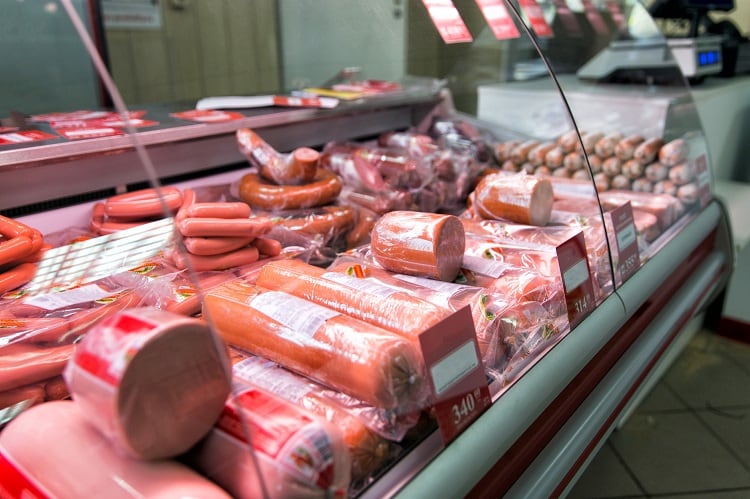Despite a rise in plant-based sales in western countries, global meat consumption continues to increase. So much so, that it is thought consumption is unlikely to reduce anytime soon without intervention.
At the same time, excessive meat consumption has been associated with an increased risk of total mortality, cardiovascular disease, and type 2 diabetes.
According to the World Health Organization (WHO), meat is classified a 'probably' a carcinogen, which means that its consumption – and particularly consumption of processed meat – is associated with the development of cancer.
For other carcinogens, such as tobacco smoke, interventions designed to reduce intake include the introduction of warning labels. Designed to educate consumers and elicit negative emotions, warnings on tobacco products can help young people from taking up smoking and also help smokers to quit.
A group of researchers from the University of Groningen, the Netherlands, have been wondering whether graphic warning labels on meat could have the same effect.
Disgust and reactance
While graphic warning labels for meat products have been called for, their effect on consumer intentions to reduce their meat consumption has not been tested.
Warning labels typically work by eliciting disgust. They do this by using graphic imagery showing death and disease.
To examine whether graphic warning labels could reduce people’s intention to consume meat, by recruiting disgust, the researchers tested whether such a label would reduce participants’ intention to consume meat.
“Although the graphic warning label elicited more disgust than the non-graphic one, and disgust reduced people’s intentions to consume meat, [this study] did not find the graphic warning label to increase consumers’ intention to reduce their meat consumption more than the non-graphic one,” noted the study authors.

Given the findings of their first study, the researchers sought to examine whether an ‘unmeasured variable’ was suppressing the direct effect of the graphic warning label on the intention to consume meat.
Notably, the researchers thought that the warning labels may be eliciting resistance toward the message. They proved this hypothesis via a second study, determining that while disgust did increase participants’ intention to reduce their consumption of meat, reactance reduced this intention.
“In sum, these two effects cancelled each other out,” they concluded.
Responses to ‘surprising food facts’
In a third study, the researchers sought to remove reactance from the equation. To do so, they elicited disgust by using a ‘trivial fact’ about the production of meat.
Specifically, the researchers supplied participants with images accompanying seven ‘surprising food facts’, such as ‘bananas contain more sugar than a glazed donut’, that ‘honey cannot spoil’, and that ‘cows may grow pus-filled abscesses that can end up in consumers’ food’.
“By presenting this disgusting image alongside a set of six other pieces of trivia, we sought to ensure that participants did not perceive the specific disgust-eliciting image as a persuasion attempt,” the study authors explained.
This study revealed that disgust, when introduced in a way that circumvents reactance, did seem to temporarily reduce people’s appetite for meat specifically.
“This could be an important step toward reducing people’s meat consumption: providing truthful yet disgusting information without a direct persuasion attempt, may make consumers reconsider eating meat.”

The researchers are calling for more research on the ethical implications of using graphic warning labels to reduce the consumption of meat.
It is possible that graphic warning labels can undermine social cohesion, they noted, referencing Riley, Ulrich, Hamann, and Ostroff’s 2017 research that found aggressive campaigns against the consumption of tobacco have been found to lead to the stigmatization of lung cancer patients.
Further, the researchers raised concerns that pairing the consumption of meat with the elicitation of disgust could make eating meat seem ‘fundamentally wrong’, and thereby may make consumers comply – irrespective of initial preferences.
“Future research should test whether these concerns are warranted,” they noted.
Source: Appetite
‘Can graphic warning labels reduce the consumption of meat?’
Published online 1 October 2021
DOI: https://doi.org/10.1016/j.appet.2021.105690
Authors: J.A. Koch, J.W. Bolderdijk, and K. can Ittersum.




